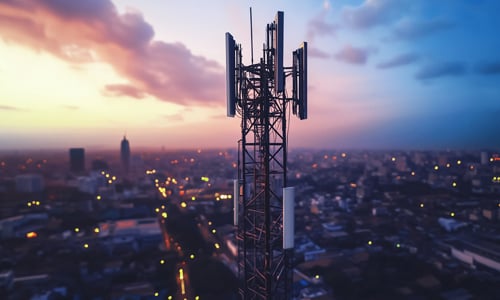5G in the rain, 5G in the sun…
Last month, I had the opportunity to attend and present at two prominent 5G conference events: 5G World in London (UK), and Valencia 5G Week in, well, Valencia (Spain).
Interestingly, the feeling at each event seemed to contrast with the local weather. On the one hand, 5G World in rainy London was—mostly—about the great 5G momentum: 5G is here, 5G has been launched, all hail 5G! Although challenges were also part of the agenda, such “clouds” did not alter the overall “sunny” 5G picture.
On the other hand, 5G Week in sunny Valencia acknowledged the 5G progress but focused more on what is coming (or should come) for 5G and beyond. While by no means negative or pessimistic, the mood inside the gorgeous Valencia Conference Center reflected the need for ongoing innovation.
Rain or shine, both events shared common themes, including network deployment and operation concerns or expectations for the evolution of 5G.
If you’re gonna do it, do it right1
Yes, 5G is already available in a few countries. Yes, more service providers are planning to launch 5G in the next few months. But to make the most of 5G, the right approach must be followed. And this remains a popular subject at conferences, as seen at 5G World and Valencia 5G Week.
Indeed, there are various factors to consider when deploying (e.g., testing) and operating (e.g., monitoring) 5G. The underlying physical and virtual network infrastructure (4G, fiber, etc.) is key and should not be ignored. The vital role of analytics and automation, including advanced topics such as artificial intelligence, should not be overlooked either.
Unsurprisingly, the wish for collaboration/cooperation/partnership dominates the discussion around the right approach to 5G. As also commented in a blog on the hopes of mobile network operators in 2019, collaboration is essential to address complexity and realize the 5G benefits across industry verticals.
The complete picture
5G is here now. At least, we get a glimpse of 5G, with enhanced mobile broadband (eMBB) and fixed wireless access. How long will it take before we experience 5G in full? Well, similar to past Gs, 5G must follow a process of gradual—standards release and network—evolution. Let’s just not describe this as a “long term evolution”, a potentially confusing reference2 made in some presentations and discussions last month.
In fact, some industry experts do not think that 5G will be able to deliver on all its promises. Take for example energy efficiency, a main topic at the London and Valencia 5G events. To reach the high energy efficiency level that a vast network infrastructure demands, the improvements introduced by 5G might not suffice. And this is where 6G may be required. Another case of the “curse of odd numbers” for the mobile industry3? Maybe. Then again, 5G might break the “curse”!
Of course, the thought-provoking debates at 5G World and Valencia 5G Week were not limited to the above. For additional highlights, join my webinar on July 10 entitled “5G begins: latest status, key challenges, lessons learned” by registering here. For more information about 5G, please contact EXFO.
You may also be interested in our new podcast, “Know your network,” featuring thought-provoking conversations around key management challenges facing today’s carriers.
1 This was the title of my presentation at 5G World. Yes, this is also a verse in a popular 80s pop song. No, the song (by Wham!) is not about 5G.
2 Long Term Evolution (LTE) and its successors, LTE-Advanced and LTE-Advanced Pro, are related to 4G and 4G evolution standards. Furthermore, the term LTE has been used by service providers for marketing purposes.
3 According to this “curse”, odd-numbered mobile generations are problematic and not as successful or complete as even-numbered ones. Believers in this “curse” juxtapose 1G with the hugely successful 2G, and then 3G (which did not live up to expectations and required corrective action) with 4G.




